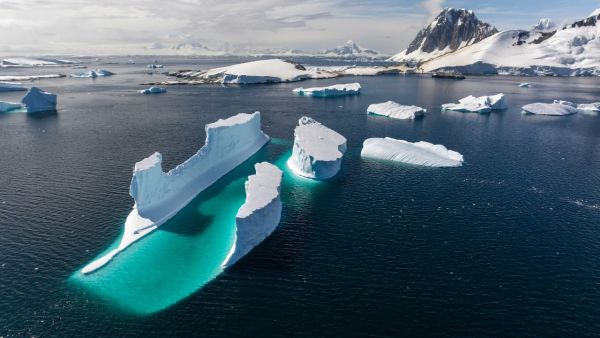
Antarctic sea ice has been rapidly declining since 2014, and new research shows ocean stratification may prevent recovery, even if carbon emissions drop. This has serious global impacts on climate, sea levels, and ecosystems. Read more.
Ice in the Antarctic Sea has been decreasing significantly since 2014. Scientists are trying to determine if this trend can be reversed. A new study suggests that it’s not only about the amount of carbon dioxide we emit into the atmosphere. It also depends on how the Southern Ocean is structured beneath the surface.

The research, led by Sirui Li from the Ocean University of China, was published in Geophysical Research Letters. It highlights that the way ocean water is layered plays a major role in whether sea ice can recover after being lost.
What Is Ocean Stratification?
The ocean is not a single, uniform body of water. It is made up of layers, with colder, fresher water typically sitting on top of warmer, saltier water. When these layers are strongly separated and do not mix easily, that is called stratification. If warm water stays trapped near the surface, it can prevent sea ice from forming or even cause it to melt from below.
The Experiment: Simulating the Future
Scientists used computer models to simulate various future scenarios. They explored how Antarctic Sea ice might respond if carbon dioxide emissions stabilized or decreased, and how these outcomes vary depending on the initial level of ocean stratification. They ran simulations starting with different levels of ocean stratification: one where the ocean was already highly layered and another where it was more mixed. They tested what would happen in both cases as emissions either remained constant or declined.
The results were clear: if the ocean starts off strongly stratified, heat remains in the upper layers of the ocean. This warm surface water melts more sea ice, and as the ice melts, it makes the top layer even colder and fresher. This creates a cycle: more heat at the surface → more melting → stronger layers → even more melting.
In one simulation, even after atmospheric carbon dioxide levels were reduced back to pre-industrial levels, sea ice did not fully recover. By the year 2129, the sea ice area was still 1.4 million square kilometres smaller than before, and it continued to decline slightly for decades afterwards. This means, it may take a very long time for Antarctic sea ice to recover even if we cut carbon emissions.
On the other hand, when the ocean layers were less strongly separated to begin with, sea ice was much more likely to return as carbon emissions decreased.
Why Is This Important?
Losing sea ice doesn’t just affect Antarctica, it has widespread effects across the globe.
• More open water in summer means more sunlight is absorbed by the ocean (instead of being reflected by ice), making the ocean warmer.
• Warmer ocean water can melt the ice shelves that help hold back land-based glaciers, which could lead to faster sea level rise.
• Many Antarctic animals, from tiny algae to penguins and seals, rely on sea ice to survive. If the ice disappears, so do the ecosystems that depend on it.
What Needs to Be Done
The researchers say we need more detailed observations of the Southern Ocean, especially measurements of temperature and salt levels below the surface. This will help scientists better understand how ocean layers are changing and improve the accuracy of climate models. Experts say that the ice can come back only if we reduce carbon dioxide emissions significantly.
-
Asia Cup 2025: Pakistan opener Sahibzada Farhan has NO regrets about viral ‘gun-celebration’ after Asia Cup 2025 Super 4 match vs India, he says…

-
Raghav Juyal reacts to Emraan Hashmi’s viral ‘Kaho Naa Kaho’ clip; says, ‘Aryan and I both…’

-
Bobby Deol opens up on son Aryaman’s Bollywood debut, hints at possible collaboration with Shahrukh Khan’s son Aryan Khan?

-
This Pakistani singer inspired Lata Mangeshkar, sang over 10,000 songs, and became a legend across borders, her name was…

-
Discover India at Hyderabad’s biggest handicrafts fair in Madhapur
